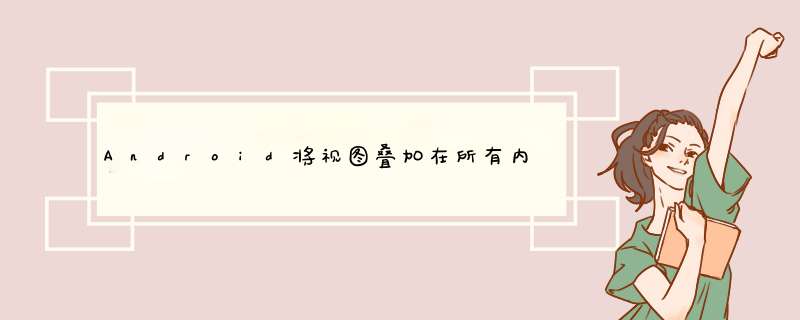
只需使用
RelativeLayout或
frameLayout。最后一个子视图将覆盖其他所有内容。
Android支持Cocoa Touch SDK不支持的模式:布局管理。iPhone的
布局 意味着将所有内容都放置在绝对位置(除了一些拉力因素之外)。android中的布局意味着将孩子彼此放置在一起。
示例(第二个EditText将完全覆盖第一个):
<frameLayout xmlns:android="http://schemas.android.com/apk/res/android" android:orientation="vertical" android:layout_width="fill_parent" android:layout_height="fill_parent" android:id="@+id/root_view"> <EditText android:layout_width="fill_parent" android:id="@+id/editText1" android:layout_height="fill_parent"> </EditText> <EditText android:layout_width="fill_parent" android:id="@+id/editText2" android:layout_height="fill_parent"> <requestFocus></requestFocus> </EditText></frameLayout>
frameLayout是某种视图堆栈。专为特殊情况制作。
RelativeLayout非常强大 您可以定义规则,例如 视图A必须将父布局的底部对齐 , 视图B必须将A的底部与顶部对齐 ,等等。
根据评论更新
通常,您使用
setContentView(R.layout.your_layout)in
设置内容
onCreate(它将为您增加布局)。您可以手动进行 *** 作并致电
setContentView(inflatedView),没有区别。
该视图本身可以是单个视图(例如
TextView),也可以是复杂的布局层次结构(嵌套布局,因为所有布局都是视图本身)。
调用
setContentView活动后,便知道其内容是什么样的,并且可以
(frameLayout)findViewById(R.id.root_view)用来检索此层次结构中的任何视图(常规模式
(ClassOfTheViewWithThisId)findViewById(R.id.declared_id_of_view))。
欢迎分享,转载请注明来源:内存溢出

 微信扫一扫
微信扫一扫
 支付宝扫一扫
支付宝扫一扫
评论列表(0条)